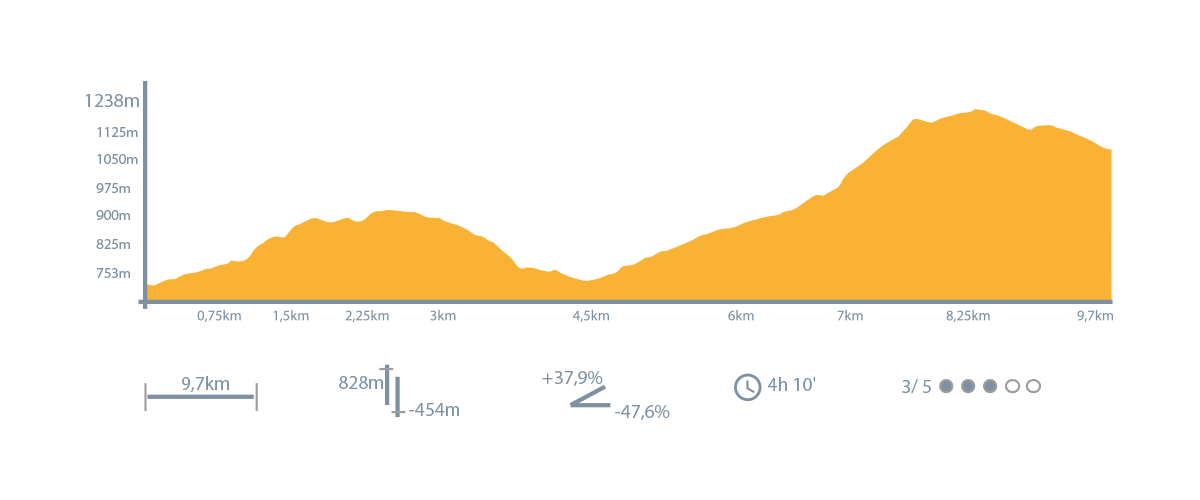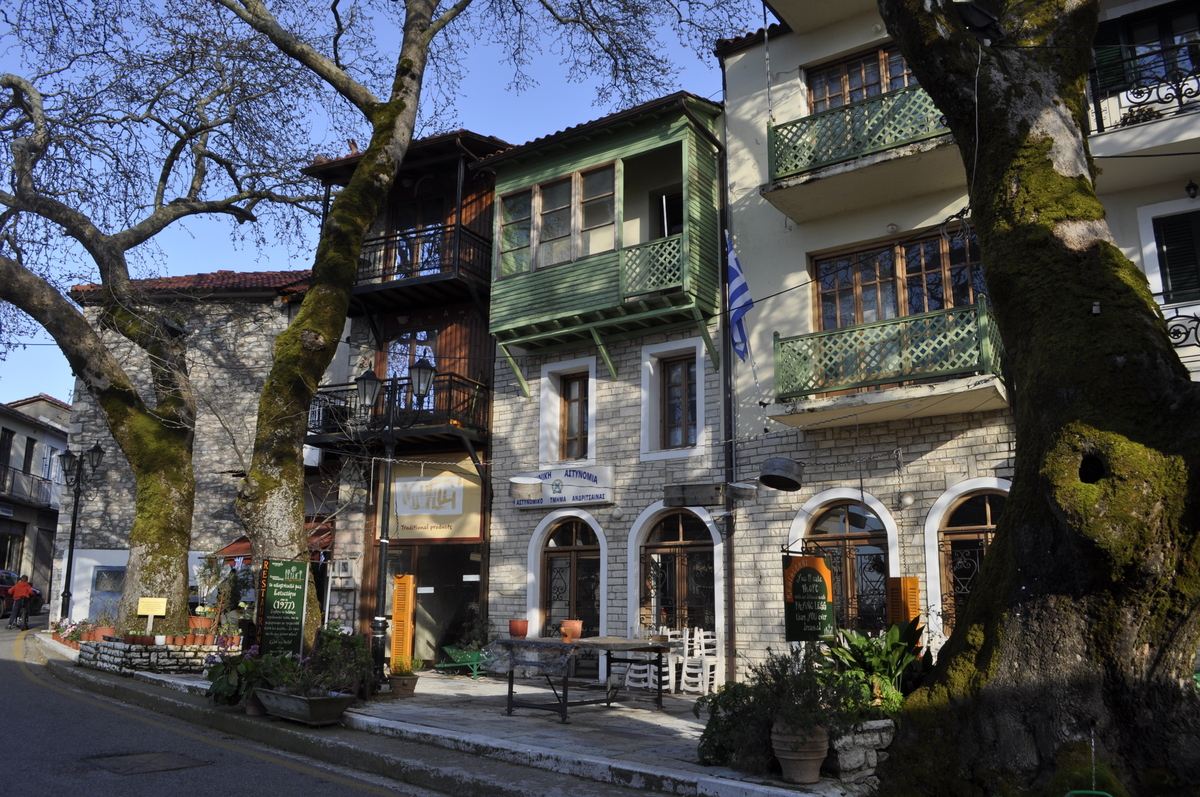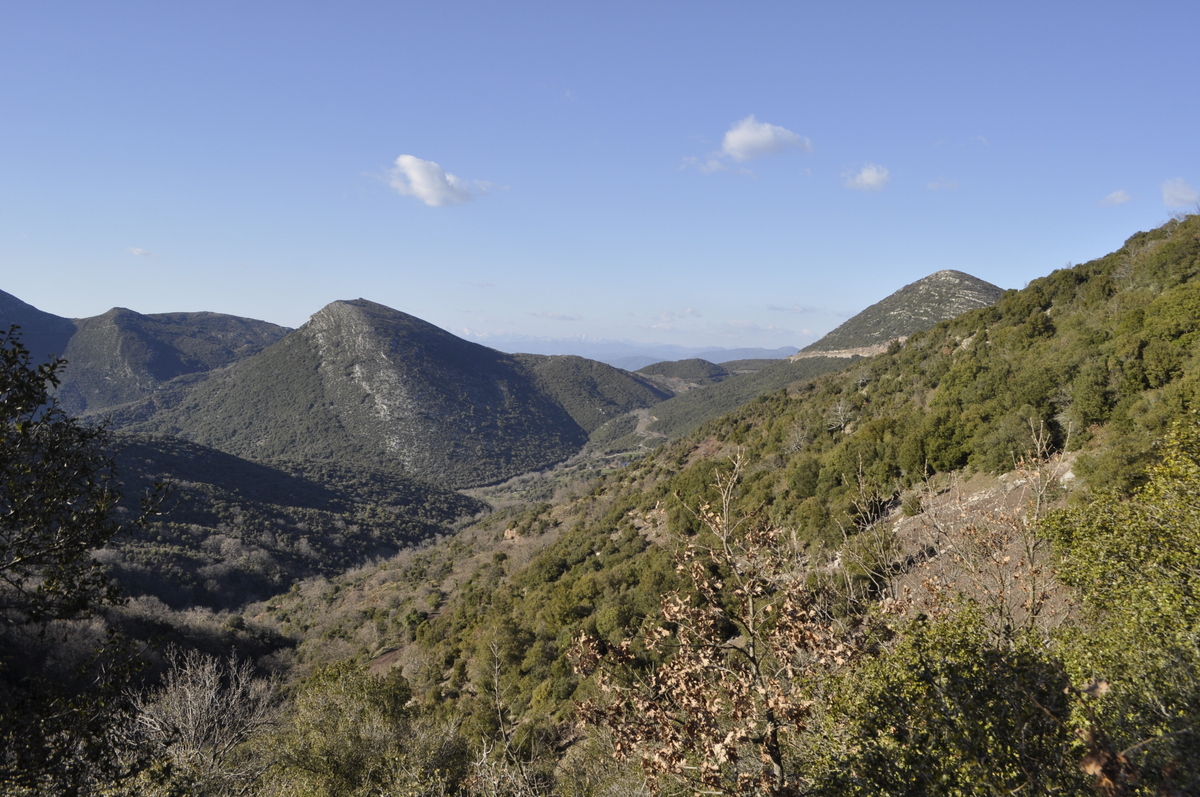Project Description
2. Trail of Light
Andritsaina - Epicurious Apollon
The path connects the historic town of Andritsaina with the Temple of Epicurean Apollo.
Start off at the picturesque town of Andritsaina with its cobbled streets, its traditional square and most of all, the country’s most important provincial library. A library of very rare historical, scientific, philosophical and social editions, a library of great spiritual wealth.
Follow the path that Pausanias walked in the 2nd century AD. so as to visit the Temple of Apollo Epicurus; a temple dedicated to the god Apollo, God of light.
Be inspired by this path and find the knowledge that will help you find your own light.

Details
| 11.6 km | 4h 25‘ | 3/5 |
Starting point: Andritsaina
Ending poind: Epicurious Apollon
Main sights: Apollo Epicurius Temple, Andritsaina, Anathema
Connected to: 1. Trail of Healing, 3. Trail of Love
Trail description
The path starts from the famous Trani Vrisi of Andritsain, built in 1724. It then passes through the village square with the impressive plane tree, passing picturesque narrow alleys until reaching the Stavruli area. Above Stavrouli, at the place of “Tsomakou”, the route follows an old path to the area of Kalamiona, where the farming activity is predominant.
Then, a dirt road with beautiful views of the adjacent valley leads to the ‘Anathema’. There, in the beginning of the 19th century, after the Turks ambushed the Greeks, the Turks placed the head of “the most handsome boy of Gortynia” on a rock. Since then, this place has been called Anathema.
From there, the route goes up an old path to Alonaki, with great views to the west. The last kilometers to the Temple of Epicurean Apollo are located on a ridge with a limitless view of the entire region of the Peloponnese. Accessibility to the area called Vassae (small valleys) in ancient times, is from the north, with an old, stone-built path that leads to the Temple from the direction in which mythology was coming and the god Apollo “assisted” the Fugitives, the ancient inhabitants of the area.
Caution: The last leg of the route is within the guarded archaeological site. A pre-arrangement with the temple guard (at least one day in advance) is required to open the door (tel. +30 26260 22 275). Alternatively, the signage will take you to the main gate of the temple from the asphalt.
Sightseeing spots
Apollo Epicurius Temple
It’s the masterpiece of Iktinos. Today it is covered by a tent designed specifically to withstand wind pressure and snow loads. The temple will be covered to protect it from extreme weather conditions as long as the restoration works are ongoing. Made of local limestone, the temple fits in wonderfully with the imposing landscape surrounding it, despite the fact that the tent-covering partially destroys this feeling. The temple was renowned in antiquity for its beauty, for its architectural virtues and also for the magical place in which the Fygals chose to build it. The marble sculptural decoration of the temple, with scenes
Centaurs and Amazonons is considered to be the work of the sculptor Paionius. Today it is on display at the British Museum. Plaster copies of the 23 embossment τ marble slabs can be admired in the Andritsaina Library building.
Andritsaina
An Historic town at the foot of Mount Koukourevos, northwest extension of Lycaeus. It is a beautiful city, with its traditional square, in the shadow of an centuries-old plane tree, with its picturesque cobblestone streets and many options for dining and accommodation. It attracts thousands of visitors each year. Andritsaina was the homeland of Panagiotis Anagnostopoulos, one of the four members of the Secret Society of the Friendly Society, with significant activity during the revolution but also in the later years of freedom. The city has an excellent Folklore Museum and the country’s most important Provincial Library, donated by Agathropron Nikolopoulos of andritsian origin, with thousands of rare and unique volumes from the early years of printing.
Anathema
At this point, at the beginning of the 19th century, the Turks had ambushed ‘fustanellades’ of Adritsena who were preventing the seizure of the marbles of the Temple of Apollo Epicurus. During the skirmish, the Turks killed “Gortynia’s most beautiful lad” and placed his head on a rock. Since then the area has been called Anathema (=Cursed). According to sources, when the Greeks returned to the site, they transported the young man’s lifeless body to the village of Skliros, using the section of the path that goes from the Anathema to the place “Alonaki”.




